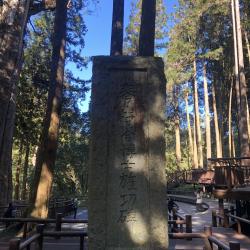Kawai Shitaro visited Alishan in Chiayi in May 1902 and found that Alishan had excellent forestry, good materials and abundant resources. Afterwards, Dr. Hehe's opinions played a key role in several important surveys and forestry management planning. Dr. Kawai played a major role in the development of Alishan forestry. In the 6th year of Showa (1931) March 14, Dr. Kawai passed away in Tokyo, Japan. In honoring his achievements, posterity erected the Kinzan Dr. Kawai Monument in Alishan in November, Showa 7 (1932). It was officially unveiled on February 3, Showa 8 (1933), and designated as a county historic site in 2009.
鄒
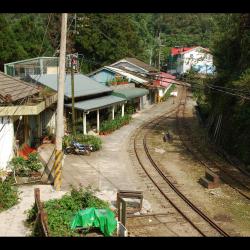
Shitzulu Station was opened in October of the first year of Taisho (1912). It is a stop of the Alishan Forest Railway, with an altitude of about 1,530 meters. Before the Alishan highway was opened, Shitzulu was the traffic hub in the village, and also the most interacted village and closest to indigenous villages. Since it is located in the midpoint between the Alishan Forest Railway and the Tefuye hamlet of the Cou tribe, the station connects Laiji and Tefuye hamlets. Therefore, the nearby hamlets like Tsatsaya, Shanmei, Lalauya, Laiji, Tefuye had earlier contact with the outside world than other tribes due to their location.
Today, most of the residents of Shitzulu village are descendants of loggers from the Japanese occupation period or employees of the Alishan Forest Railway. In the past, the area was quite developed because there is a train station as well as simple power supply equipment, a post office, and other facilities. However, after the opening of the Alishan Highway, the function of the railway station died away.
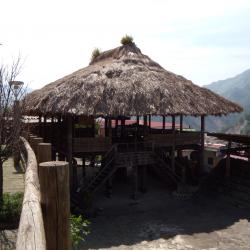
Cou people believe that the existence or failure of a tribe is dependent on the existence or non-existence of the men’s meeting house (Kuba). The housing facilities inside the settlement are the reflection of the operation of the social system. The settlement is the tribal integration center, and its symbolic building is the Kuba. All political, economic, religious, and other public affairs of the tribe must be carried out inside the kuba. The kuba is built in the center or at the entrance of the settlement and is the largest building in the tribe. There is a fire pit in the center of the kuba. Traditionally, the fire must be lit all year round, which symbolizes the continuous life of the tribe. As it has a thatched roof, the fire cannot be too fierce. The square in front of the kuba is a place for tribal ceremonies, judicial arbitration, and other public affairs. There is a sacred tree and an altar below it on the north side of the square. It is a sea fig tree (Yono), which is the ladder for the gods to descend from the sky.
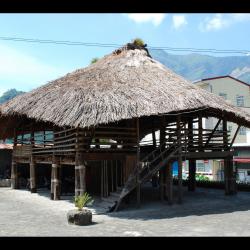
Cou people believe that the existence or failure of a tribe is dependent on the existence or non-existence of the men’s meeting house (Kuba). The housing facilities inside the settlement are the reflection of the operation of the social system. The settlement is the tribal integration center, and its symbolic building is the Kuba. All political, economic, religious, and other public affairs of the tribe must be carried out inside the kuba. The kuba is built in the center or at the entrance of the settlement and is the largest building in the tribe. There is a fire pit in the center of the kuba. Traditionally, the fire must be lit all year round, which symbolizes the continuous life of the tribe. As it has a thatched roof, the fire cannot be too fierce. The square in front of the kuba is a place for tribal ceremonies, judicial arbitration, and other public affairs. There is a sacred tree and an altar below it on the north side of the square. It is a sea fig tree (Yono), which is the ladder for the gods to descend from the sky.
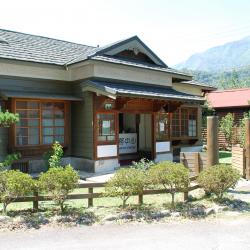
The Dabang Police Dormitory, located behind the Dabang Police Post in Alishan, was used by the Governor-General in Taiwan to send officers there to supervise the local Tsou people during the Japanese occupation. Due to the changes in the Lifan Policy (Indigene Management), the Dabang Police Post had different names and functions. It was not until the legalization of the station where the officers were stationed that it was named the Dabang Police Officer Station in 1913. At that time, the police dormitory where Dabang was stationed not only provided police housing, but also hosted officials who came for inspection. After the war, the National Government changed it to a dormitory for the mayor’s family members. Currently, the building has been renovated and is being used as the Dabang Visitor Information Center.
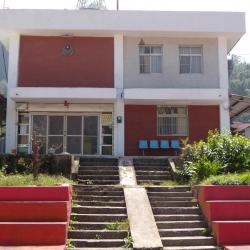
The Dabang Police Station is located in Dabang Village, Alishan Township, Chiayi County on the terrace where Tefuye River and Changgu River merge into the mainstream, about 970 meters above sea level. The traditional Tsou name of the place, Dabanu, was taken from the last name of the chief who established the tribe. During the Japanese occupation, the Government-General in Taiwan set up a police post in the Dabang tribe. However, due to changes in the Lifan Policy (Indigene Management), the police post had different names and functions. After the police posts were legalized in 1913, it was named Dabang police officer station.
Today, Dabang Police Station still has an independent firearms and ammunition warehouse as well as the police dormitory of that time.
